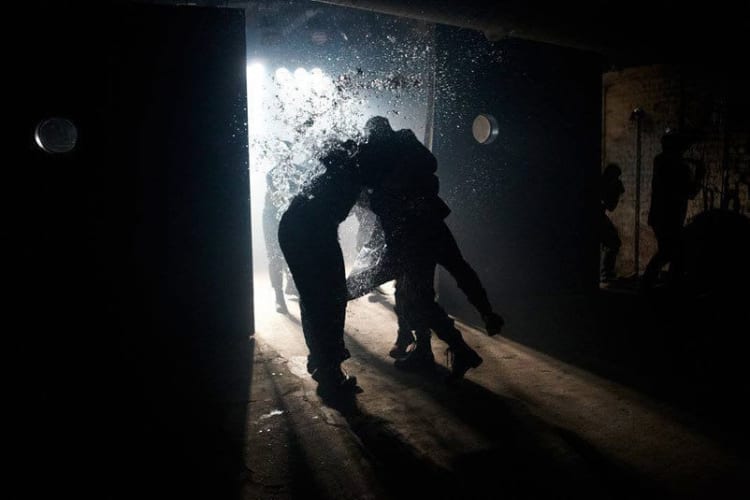The scene is set for this atmospheric evening before the audience even enters the auditorium. The Old Vic Tunnels beneath Waterloo Station have been adorned with an assortment of naval icons and to top it all, a memorable scene of stokers at work is tirelessly enacted.
The triptych of mini maritime plays shares characters and connects well as a portrayal of the vicissitudes of naval life in the years around the Great War.
Technically, the last two of these works comprise The Sea Plays, though quite why they should have been divided from their natural triplet is unclear.
Each is directed in great style by Kenneth Hoyt, appropriately from Provincetown Repertory Theatre in the Massachusetts town where Eugene O'Neill saw these plays staged for the first time.
He makes the most of this earthy space, aided by great contributions from his designers, Van Santvoord (set), Emma Chapman (lighting) and Alex Baranowski (Music and Sound).
The only fault with what is a really fine all-round production is a series of cod cockney accents that would embarrass the worst of aspirant Eliza Doolittles.
Bound East for Cardiff
The pre-staging seems daring but is as nothing to the opening scene of Bound East for Cardiff. A storm at sea worthy of a Shakespearean tempest is depicted with epic realism.
It ends with a lone sailor beaten in every sense by the storm. The play then follows Yank's attempts to stave off the watery grave that will be his fate if he cannot hold out for a week until his ship reaches South Wales.
This simple tale is given poignancy by excellent acting in this role from Carsten Hayes, who gets strong support from Matthew Trevannion as his bosom buddy Driscoll.
In the Zone
The second play features a wartime spy story in which a group of sailors becomes frantically neurotic as German submarines circle.
Their suspicions fall on Matthew Thomas as Smitty, a congenital outsider with a secret locked in a box.
While the tale is tall, if one can suspend disbelief a little it builds tension to a high peak before leading to a characteristic solution for Eugene O'Neill.
The Long Voyage Home
The final play of the two hours is set in the worst dockside dive imaginable, as a quartet of drunken sailors comes to celebrate payday and a short period of freedom from their shipboard travails.
The Long Voyage Home contains few dramatic surprises but, like its companions, explores several themes that would become familiar in O'Neill's work once he established himself, most particularly The Iceman Cometh.
Raymond M. Sage's Olson, a Swede played by John Wayne in the 1940 film version, has not been home for years, always getting drunk as soon as he hits dry land and, in need of cash, signing up for yet another voyage.
This time, he decides to be good, foregoing Irish whiskey for ginger ale and ladies of the night for an early one.
The ending of a tale, with a moral good enough for Bernard Shaw, is both predictable and inevitable.
It is pleasing to see Eugene O’Neill making a comeback and like his first published play, Beyond the Horizon, that received a great revival at Northampton and the National by Laurie Sansom, these little-known short pieces are well worth a visit whether you are an aficionado or have little knowledge of his work.
They will also provide a good curtain raiser to David Suchet's high profile West End appearance in Long Day’s Journey Into Night later in the spring.
